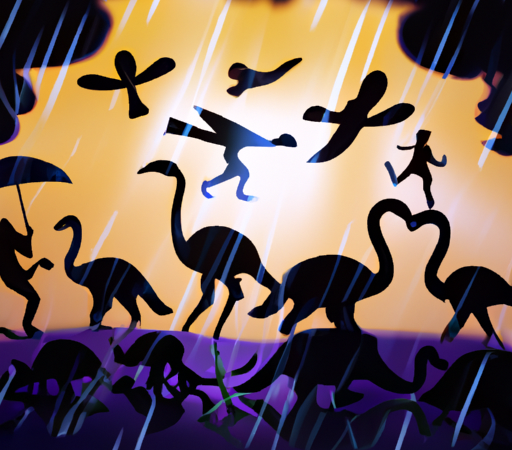Remarkable Adaptations: How Animals Survive in Extreme Environments

Remarkable Adaptations: How Animals Survive in Extreme Environments
Animals are astounding creatures. They have managed to inhabit nearly every corner of the Earth, from the scorching hot deserts to the freezing Arctic tundra. In their quest for survival, they have developed remarkable adaptations that allow them to thrive in the most hostile and extreme environments.

One such incredible feat of adaptation is found in the driest places on Earth, such as the desert. While water is scarce, animals like the camel have found ingenious ways to store and conserve it. Their humps contain fat reserves, not water as commonly believed, but their ability to metabolize this fat releases water, sustaining them for weeks without drinking. Additionally, their nostrils can close to keep out sand, and their long legs and broad feet help them maneuver through the treacherous dunes.
In the depths of the ocean, where pressures can reach extraordinary levels, creatures have evolved adaptations that allow them to survive. The anglerfish, for example, has developed a bioluminescent lure to attract its prey. This adaptation is necessary as food is incredibly scarce in the abyssal zone. Additionally, some deep-sea fish have elasticized proteins in their bodies that allow them to withstand the intense pressure, enabling them to dive thousands of feet below the surface.
Another extreme environment, polar regions, present animals with frigid temperatures and limited food sources. To withstand these harsh conditions, polar bears have adapted by evolving a thick layer of blubber and dense fur to insulate themselves from the cold. Additionally, their large paws help them to distribute their weight more evenly when walking on thin ice, reducing the chances of them falling through. Their diet, primarily consisting of seals, provides the necessary energy to survive in these freezing climates.

The ability of animals to adapt to their surroundings is also evident in the most extreme temperatures on Earth. In scorching hot regions like the Sahara Desert, survival can be incredibly challenging due to soaring temperatures. Yet, animals like the fennec fox have managed to overcome such hardships. Their large ears act as a cooling system, dissipating heat and allowing them to regulate their body temperature more effectively. Additionally, they have thick fur on the soles of their paws, providing protection and insulation as they traverse the blistering sand.
Adaptation is not limited to merely physical traits but also extends to behavior. Take the migration of the wildebeest in Africa, for instance. Each year, these herbivores travel thousands of kilometers in search of greener pastures and water sources. They have mastered the art of synchronized migration, forming immense herds that offer protection against predators and improve their chances of survival.
In conclusion, the ability of animals to adapt to extreme environments is truly remarkable. Whether it be enduring the driest deserts, braving the freezing polar zones, withstanding immense pressure in the depths of the ocean, or surviving scorching temperatures, animals have proven time and time again their unrivaled capacity to adapt and thrive in the most hostile conditions. These adaptations serve as a testament to the incredible diversity of life on our planet and remind us of the awe-inspiring abilities of the animal kingdom.






